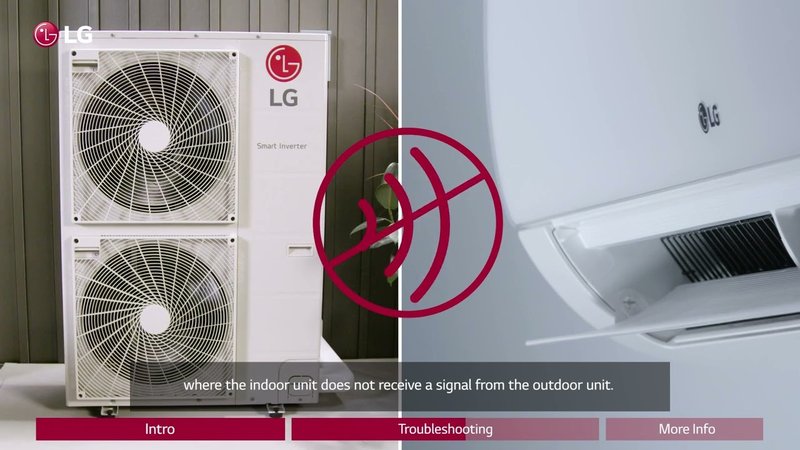
You might be wondering: is it really a big deal? Let’s put it this way—error codes act like your AC’s way of waving a red flag, saying, “Hey, something’s not quite right here!” It doesn’t necessarily mean doom and disaster, but it’s definitely a signal to pay attention. Think of it like your AC is trying to have a conversation with you about a problem it’s experiencing. But what’s behind this F2 error, and should you be worried? Let’s dive in and decipher what it means, what might be causing it, and how you can handle it safely.
Understanding the LG Error Code F2
Before you jump to conclusions, it’s important to understand what the F2 error code actually means. In the world of air conditioners, codes like these are used to identify specific faults. For LG air conditioners, the F2 error typically indicates a problem with the indoor pipe sensor. Now, what in the world is an “indoor pipe sensor,” you ask? Imagine it like a thermometer that’s supposed to check if your air conditioner is operating at the right temperature. Just as a fever thermometer checks if you’re under the weather, the sensor ensures your AC isn’t overheating or undercooling.
Why does this matter? Well, if your AC thinks it’s too hot or too cold when it’s not, it won’t operate correctly. This sensor plays a crucial role in maintaining the comfort of your home by ensuring the unit’s temperature settings are accurate and reliable. When it malfunctions, you might notice that your AC isn’t cooling as effectively as it should, or worse, it might stop working altogether.
So, should you hit the panic button? Not necessarily, but it’s a clear indication that some attention is needed. Ignoring this error could lead to inefficiencies or further damage. Just like ignoring a strange noise from your car can turn a minor issue into a major repair, neglecting the F2 error could lead to bigger problems down the road.
Causes and Consequences of the Error Code F2
What could possibly cause such a sensor to act up? Typically, the F2 error can be triggered by a faulty or dirty sensor, wiring issues, or even a temporary glitch in the system. Dirty or dusty sensors can misread temperatures, much like how a foggy windshield can distort your view while driving. Additionally, damaged wiring can send incorrect signals, causing the sensor to alert you with that cryptic F2 message.
If left unchecked, this simple issue could snowball into larger, costlier problems. For instance, an incorrectly functioning sensor might cause the compressor to work harder than it should, leading to increased energy bills and premature wear and tear on the unit. It’s a bit like running a marathon with a limp—it’s just not sustainable.
But don’t fret! Addressing this issue sooner rather than later can prevent those unwanted consequences. Consider it as an opportunity to give your AC a little TLC. By resolving the F2 error, you’re not only extending the life of your unit but also ensuring your home stays comfortable and energy-efficient.
How to Safely Address the F2 Error
Here’s the deal: before you do anything, safety first! Ensure that your air conditioner is turned off and unplugged before attempting any kind of troubleshooting. Electricity and DIY repairs can be a dangerous mix if not handled properly. Think of it like turning off the stove before cleaning up a spill—an important first step.
Once you’ve powered down, you can try a simple reset. Some issues are just flukes, and a quick restart can clear minor glitches. If the error persists, it might be time to inspect the sensor and its connections. It’s not unlike checking to see if your phone’s charger is properly plugged in when it’s not charging. Sometimes, the solution is simpler than you think.
If the problem continues, calling a professional technician is your best bet. An expert can accurately diagnose the issue and recommend appropriate solutions, ensuring your AC returns to optimal performance. When in doubt, professional help minimizes risks and maximizes peace of mind.
Preventative Tips to Avoid Future Error Codes
Nobody likes dealing with pesky error codes, and the best cure is prevention. Regular maintenance is key to keeping your LG air conditioner running smoothly. Consider scheduling annual check-ups with a professional technician who can inspect, clean, and service your unit. Imagine it like taking your car in for a routine oil change—an ounce of prevention is worth a pound of cure.
Keeping your air filters clean is another simple yet effective way to maintain efficiency. Dirty filters can lead to a host of issues, not unlike trying to breathe through a clogged straw. Make it a habit to check and replace them every few months, especially during peak usage times.
Finally, stay attentive to any unusual sounds or performance issues. Just as you’d notice if your car made a strange noise, paying attention to your AC’s behavior can catch issues before they become serious. A little vigilance goes a long way in ensuring your home remains a cool and comfortable haven.
In conclusion, while an F2 error code on your LG air conditioner may seem intimidating, understanding the issue, addressing it promptly, and maintaining your unit can keep your home cool and your mind at ease. Now that you’re armed with this knowledge, you can face any future error codes with confidence.